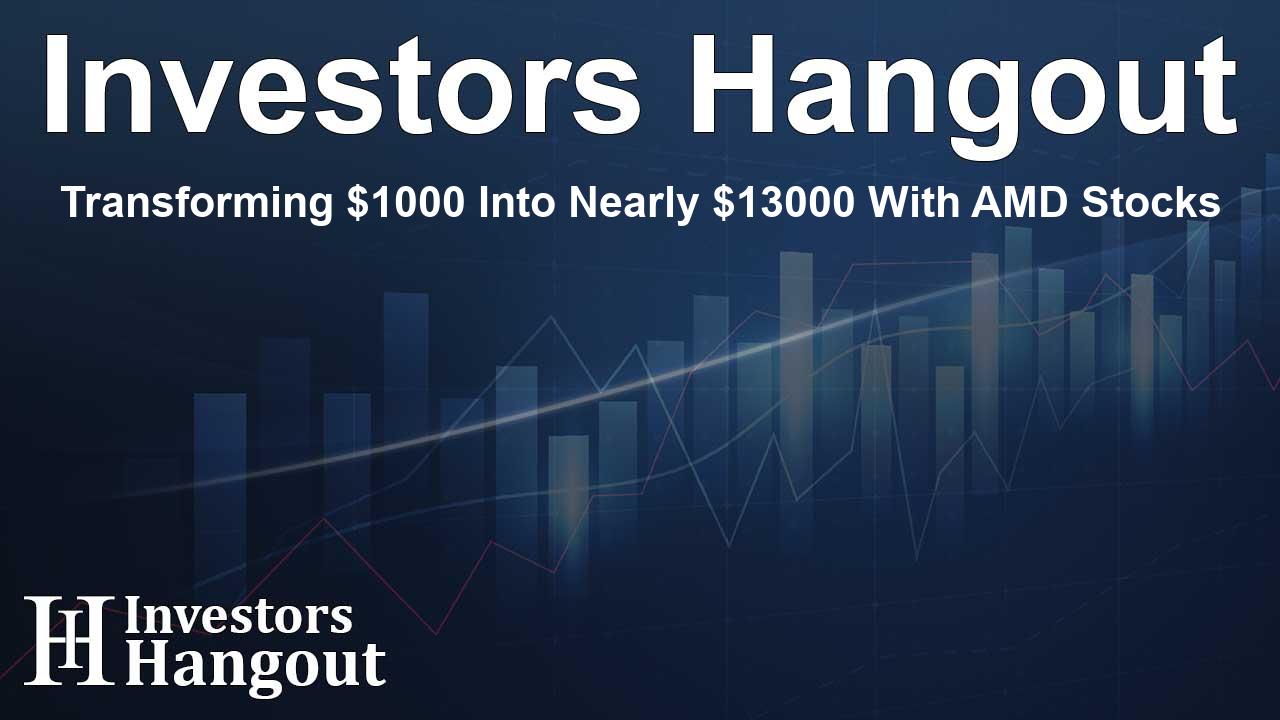Transforming $1000 Into Nearly $13000 With AMD Stocks

The Growth Journey of Advanced Micro Devices
Over the last 15 years, the performance of Advanced Micro Devices (NASDAQ: AMD) has been nothing short of impressive. This semiconductor giant has consistently outperformed the market, recording an annualized return of 18.7%, which translates into a remarkable 7.21% edge over market averages. Today, AMD boasts a market capitalization of $188.09 billion, signifying its dominant position within the technology sector.
Investment Insight: What if You Invested $1000?
Imagine making an investment of $1000 in AMD stock 15 years ago. With the stock trading at $115.90 currently, that initial investment would have ballooned to a staggering $12,884.57 today! This growth is a testament to the power of long-term investing and the benefits of compounding returns. Over such a duration, even modest yearly growth can culminate in substantial financial results.
Understanding Compound Growth
To appreciate the impact of investment returns further, consider how compounding works. When profits from an investment are reinvested, they generate their own earnings. In the case of AMD, this compounding effect has significantly contributed to the returns investors have witnessed over the years. For those who opted for short-term strategies, the compounded growth might have gone unnoticed, but for long-term investors, it has been hugely rewarding.
AMD's Remarkable Market Journey
AMD has not only excelled in profitability but has also solidified its reputation as a key player in the semiconductor market. The innovations in their processing units and graphics cards have drawn widespread consumer attention and increased demand, contributing to their impressive stock performance. They are continually pushing technological boundaries, which is likely to keep attracting investment from enthusiastic investors.
Investor Takeaway
Ultimately, the key takeaway is straightforward: investing with a long-term perspective in stable companies like Advanced Micro Devices can lead to surprisingly high returns. As demonstrated, what starts as a modest $1000 investment can grow immensely and provide financial security over time. This is an excellent lesson for both novice and seasoned investors alike, reminding everyone of the importance of patience and vision when investing.
Frequently Asked Questions
How much would a $1000 investment in AMD be worth today?
A $1000 investment in AMD stock 15 years ago would now be worth approximately $12,884.57.
What is the annualized return of AMD over the last 15 years?
AMD has achieved an impressive annualized return of 18.7%, outpacing the market by 7.21%.
What factors contributed to AMD's growth?
Advancements in technology, increased consumer demand, and their innovation in processing units are key factors in AMD's growth.
Why is compounding important in investing?
Compounding increases the value of investments by reinvesting earnings, leading to exponential growth over time.
What is the market capitalization of AMD?
As of now, Advanced Micro Devices has a market capitalization of $188.09 billion.
About The Author
Contact Kelly Martin privately here. Or send an email with ATTN: Kelly Martin as the subject to contact@investorshangout.com.
About Investors Hangout
Investors Hangout is a leading online stock forum for financial discussion and learning, offering a wide range of free tools and resources. It draws in traders of all levels, who exchange market knowledge, investigate trading tactics, and keep an eye on industry developments in real time. Featuring financial articles, stock message boards, quotes, charts, company profiles, and live news updates. Through cooperative learning and a wealth of informational resources, it helps users from novices creating their first portfolios to experts honing their techniques. Join Investors Hangout today: https://investorshangout.com/
The content of this article is based on factual, publicly available information and does not represent legal, financial, or investment advice. Investors Hangout does not offer financial advice, and the author is not a licensed financial advisor. Consult a qualified advisor before making any financial or investment decisions based on this article. This article should not be considered advice to purchase, sell, or hold any securities or other investments. If any of the material provided here is inaccurate, please contact us for corrections.
